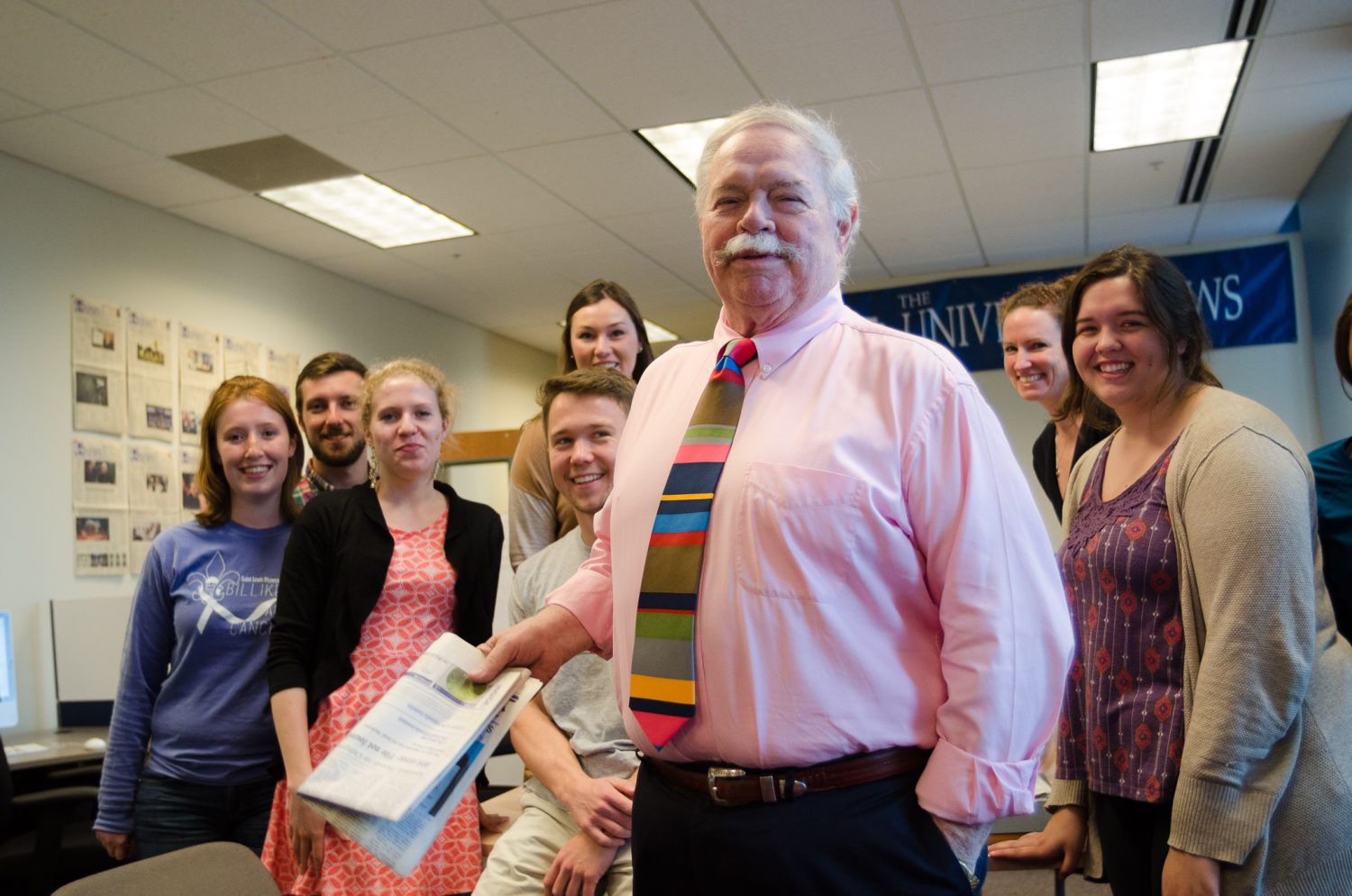Many traditions celebrate faith and community during the holiday season. Each tradition has its own strengths and blessings, and all have something to contribute to the holiday season.
The Christmas season is welcomed at Saint Louis University with the annual blessing of the crib. The crib provides a focal point for the Christian observance of the feast of Jesus Christ’s birth. The annual crib blessing “gives us as a University community a chance to remember the reason for the season,” said Mary Flick, assistant vice president for Mission and Ministry. “It reminds us that Christ comes among us still today.”
The Advent wreath is a symbol of God’s eternity and mercy, of which every season of Advent is a new reminder. The wreath is made of evergreens, to symbolize God’s everlastingness and our immortality. Green is also the Church’s color of hope and new life. Four candles, three purple that represent penance, sorrow and longing expectation and one pink that represents the hope and coming joy are placed within, to represent the four weeks of Advent. They are replaced with white candles for the Christmas season, which ends with Epiphany. Wreaths are an ancient symbol of victory and symbolize the fulfillment of time in the coming of Christ and the glory of his birth.
Christianity is just one of the many traditions that celebrate the holiday season.
Hanukkah, the festival of lights, is an eight-day religious celebration for those of Jewish faith. Hanukkah means reduction, and the symbols and rituals of the holiday demonstrate the renewal of the Jewish faith and practices. This year it was celebrated Nov. 30 to Dec. 7.
Ramadan, the month of fasting, is a Muslim celebration. The holiday is a time for inner reflection, devotion to God and self-control. Muslims see the celebration as a way to come closer to God through devotions and good deeds. It takes place during the ninth month of the Islamic calendar, which ended last week.
Kwanzaa, the fruits of harvest, is celebrated from Dec. 26 to Jan. 1. Contrary to popular belief, Kwanzaa is an African-American celebration, not a religious holiday, that was established in 1966 during the midst of the civil rights movement. The celebration was established as part of the ongoing effort for people of African descent in America to find respect and equality.
The establishment of Kwanzaa provided a cultural connection for African-Americans to their cultural history of Africa, said Karla Scott Ph.D., director of the Africa-America studies program.
“The celebration connects the tradition of honoring themselves and their community as done in many African countries,” Scott said.
The Nguzo Saba value system embodies seven principles that are proclaimed and honored each night. The seven principles are:
* Umoja (unity): to strive to help family, community, nation and race;
* Kujichagulia (self-determination): to define, name and create for ourselves;
* Ujima (collective work and responsibility): to build and maintain our community;
* Ujamma (cooperative economics): to build and maintain community businesses;
* Nia (purpose): to build toward restoring the tradition greatness of a people;
* Kummba (creativity): to foster and build upon the gift of beauty in the community;
* Imani (faith): to believe in ourselves, our ancestors and the righteousness of the struggle.
Each night the candleholder holds seven candles (mishumma) to symbolize ancestors: one black, three red and three green, each representing a principle of Kwanzaa. Gifts are placed on an altar, yet the celebration is “not about receiving gifts as it is about creating unity and pride in one’s cultural heritage,” Scott said.
On the last day of the seven-day celebration a Karamu, a feast is held.
“The African-American celebration is observed by families and community as the principles are designed to enhance individuals in spiritual life as well as a collective community life,” Scott said.



